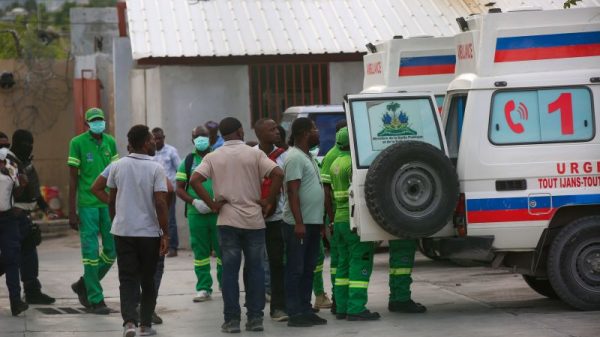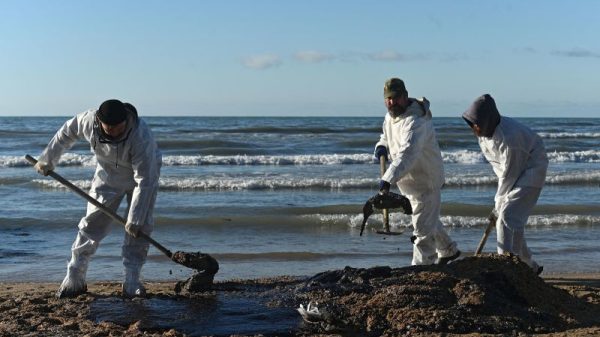After large earthquakes, there is an expectation that aftershocks could occur in the hours and days that follow, but aftershocks from some of the strongest earthquakes in recorded United States history may still be happening — nearly 200 years later, new research has found.
Frequent aftershock activities stemming from a trio of quakes that occurred near the Missouri-Kentucky border between 1811 and 1812, and a separate earthquake in Charleston, South Carolina, in 1886, are likely continuing today, according to a study published recently in the Journal of Geophysical Research: Solid Earth.
One of the regions researchers focused on, called the New Madrid seismic zone, encompasses present-day Memphis and the surrounding Mid-Mississippi River Valley area, and the other includes Charleston and the surrounding coastal plain. Seismic activity in these relatively stable regions of North America is not well understood, and its nature is debated among scientists, the study authors wrote.
“You use the time, distance and the magnitude of event pairs, and try to find the link between two events — that’s the idea,” said lead study author Yuxuan Chen, geoscientist at Wuhan University in China, in a news release. “If the distance between a pair of earthquakes is closer than expected from background events, then one earthquake is likely the aftershock of the other.”
Background events, also known as background seismicity, basically refers to the current rate of seismic activity that’s considered normal for a specific region.
The researchers found that approximately 30% of all earthquakes from 1980 to 2016 near the Missouri-Kentucky border, all magnitude 2.5 or greater, were likely aftershocks from the three major earthquakes that struck the area in 1811 and 1812, which registered between magnitudes 7.3 and 7.5. In the Charleston area, the findings showed that roughly 16% of the region’s modern-day quakes were likely aftershocks from the magnitude 7.0 earthquake of 1886.
Identifying whether modern earthquakes are in fact aftershocks of previous large quakes, or are new, unrelated quakes is important for understanding these regions’ future disaster risk — even if the newer seismic activity causes little to no damage, the researchers said.
Earthquakes vs. aftershocks
The modern seismic activity the researchers studied is likely a mixture of aftershocks from the big quakes from the 1800s and background seismicity, Chen said.
“In some respects, the earthquakes look like aftershocks if you look at the spatial distribution, but earthquakes could be tightly clustered for a couple of reasons,” said Susan Hough, a geophysicist with the US Geological Survey who was not involved in the study. “One is that they’re aftershocks, but also you could have a process of creep going on that’s not part of an aftershock process. Exactly what their results mean is still open to question.”
Another thing to consider when trying to determine whether a quake is an aftershock is how seismically active (or inactive) the region is normally, Hough said.
“In an area where small earthquakes are common, it doesn’t take as long for aftershock rates to drop below the normal seismic rate,” Hough said. “Aftershock sequences in relatively quiet areas could appear to last longer simply because there’s less background seismic activity.”
Debate on long-lived aftershocks
Hough coauthored a similar 2014 study using extensive computer modeling to understand activity in the New Madrid seismic zone, and it came to a different conclusion.
“Are small earthquakes in the New Madrid seismic zone aftershocks of 1811-1812 or not?” Hough said in an email. “We’ve looked into it, and it doesn’t look consistent with a long-lived aftershock sequence.”
She and coauthor Morgan Page, a geophysicist with the USGS Earthquake Science Center, came to the conclusion that the recent tremors were instead new, unrelated earthquakes caused by strain buildup along the New Madrid zone.
Because there were no seismographs in this area in the early 1800s, there is no official data recorded from these quakes. The magnitude and impact data that exists was estimated through newspaper reports and personal journals. Using those reports, the USGS has a pretty good record of where the quakes were centered and how widespread the impacts were felt.
If the 1811 to 1812 sequence was in fact still causing aftershocks, the area would have seen a certain number of small and moderate quakes during the 19th and 20th centuries, Hough explained.
“The new study considers the question from a different angle, considering how tightly clustered earthquakes are, and concluding that some of the events are ongoing aftershocks,” Hough said. “The question remains: if New Madrid earthquakes are aftershocks, why don’t they follow the rules that aftershocks are known to follow?”
The big difficulty with confirming or denying the results of these studies or the long-lived aftershock more broadly is that among seismologists there is no universally agreed-upon definition on what an aftershock of an earthquake is, said John Ebel, a professor of geophysics at Boston College who was not involved in the latest study.
“Every seismologist who studies such phenomena has no choice but to make assumptions about how to define foreshocks, mainshocks and aftershocks,” said Ebel, who is also a senior research scientist at Boston College’s Weston Observatory, in an email. “Thus, different seismologists will define foreshocks, mainshocks and aftershocks in somewhat different ways, and that makes comparing studies by different investigators subject to uncertainty and disagreement.”
For Hough’s 2014 study, the researchers considered an aftershock sequence to be over when the rate of earthquakes fell below the rate before the main shock. Aftershocks might still be continuing, but once the normal seismic rate for the area returns, she said, you can no longer identify them as aftershocks.
Defining an aftershock
In areas of frequent seismic activity such as California, the aftershocks of a large earthquake last less than a decade, Ebel said. He added this is particularly the case for earthquakes of magnitude 6.5 or greater that have occurred in the past 50 years or so.
However, locations away from plate boundaries, such as in Central or Eastern North America, the rate of background earthquakes is very low. Other studies have also speculated that aftershocks in areas away from plate boundaries could last many centuries. The new study just applies another statistical method to reach a similar conclusion, according to Ebel.
“Because all such studies rely on statistical analyses, which inherently have some variability in them, these studies cannot answer the questions that they address with complete certainty,” Ebel said.
It would be easier to distinguish this, he explained, if we had thousands of years of earthquake data for both California and Eastern North America.
“For this reason, we seismologists sometimes disagree about which earthquakes are foreshocks or aftershocks,” Ebel said, “and I think those disagreements are inherently unresolvable.”







































